Frequency response of sound
From Olympus back to ordinary mortals. Though the GeForce RTX 4080s are quite a bit weaker than the RTX 4090s, they’re also significantly more power-efficient and cheaper. And their performance still exceeds the top models of previous generations of Nvidia and AMD gaming GPUs. In addition, MSI’s most powerful model – the Suprim X – pushes the GPU clock speeds very high, while efficiency is still top-notch.
Frequency response of sound
Measurements are performed in the TrueRTA application, which records sound in a range of 240 frequencies in the recorded range of 20–20,000 Hz. For the possibility of comparison across articles, we export the dominant frequency from the low (20–200 Hz), medium (201–2,000 Hz) and high (2,001–20,000 Hz) range to standard bar graphs.
However, for an even more detailed analysis of the sound expression, it is important to perceive the overall shape of the graph and the intensity of all frequencies/tones. If you don’t understand something in the graphs or tables below, you’ll find the answers to all your questions in this article. This explains how to read the measured data below correctly.

| Graphics card | Dominant sound freq. and noise level in F1 2020@2160p | NF-F12 PWM | NF-A15 PWM | ||||
| Low range | Mid range | High range | |||||
| Frequency [Hz] | Noise level [dBu] | Frequency [Hz] | Noise level [dBu] | Frequency [Hz] | Noise level [dBu] | ||
| MSI RTX 4080 16GB Suprim X (G), ReBAR on | 71,3 | -77,2 | 1076,3 | -69,3 | 11830,8 | -75,4 | |
| MSI RTX 3050 Ventus 2X 8G OC, ReBAR off | 138,5 | -78,8 | 1107,9 | -78,6 | 2031,9 | -84,8 | |
| MSI RTX 3050 Ventus 2X 8G OC, ReBAR on | 123,4 | -81,2 | 1107,9 | -80,0 | 18245,6 | -83,7 | |
| Sapphire RX 6650 XT Nitro+ (P), ReBAR on | 50,4 | -83,3 | 1107,9 | -72,4 | 7240,8 | -82,5 | |
| Sapphire RX 6650 XT Nitro+ (P), ReBAR off | 184,9 | -82,3 | 1107,9 | -71,4 | 6834,4 | -82,2 | |
| Sapphire RX 6600 XT Pulse, ReBAR on | Sapphire RX 6600 XT Pulse, ReBAR on | 100,8 | -71,8 | 1356,1 | -72,7 | 6088,7 | -80,9 |
| Sapphire RX 6600 XT Pulse, ReBAR off | Sapphire RX 6600 XT Pulse, ReBAR off | 100,8 | -71,8 | 219,8 | -74,5 | 6088,7 | -81,0 |
| Aorus RTX 3080 Xtreme 10G (OC), ReBAR on | 50,4 | -77,0 | 1076,3 | -56,5 | 2031,9 | -69,4 | |
| Aorus RTX 3080 Xtreme 10G (OC), ReBAR off | 50,4 | -75,9 | 1076,3 | -56,7 | 2031,9 | -69,6 | |
| Sapphire RX 6900 XT Toxic LE (P), ReBAR on | Sapphire RX 6900 XT Toxic LE (P), ReBAR on | 138,5 | -62,4 | 1107,9 | -56,6 | 11166,8 | -74,7 |
| Sapphire RX 6900 XT Toxic LE (P), ReBAR off | Sapphire RX 6900 XT Toxic LE (P), ReBAR on | 138,5 | -61,9 | 1107,9 | -55,6 | 5747,0 | -74,7 |
| Sapphire RX 6700 XT Nitro+ (P), ReBAR on | 100,8 | -73,2 | 1076,3 | -71,2 | 7034,6 | -76,5 | |
| Sapphire RX 6700 XT Nitro+ (P), ReBAR off | 100,8 | -75,2 | 1076,3 | -73,5 | 7034,6 | -76,5 | |
| MSI RTX 3060 Ti Gaming X Trio, ReBAR off | 100,8 | -70,6 | 1107,9 | -82,8 | 7034,6 | -83,7 | |
| Gigabyte RTX 3060 Eagle OC 12G, ReBAR off | 100,8 | -71,6 | 213,6 | -64,3 | 2031,9 | -74,2 | |
| MSI RTX 3090 Gaming X Trio, ReBAR off | 100,8 | -72,3 | 1076,3 | -76,0 | 4561,4 | -81,2 | |
| MSI RTX 3070 Gaming X Trio, ReBAR off | 100,8 | -73,9 | 1076,3 | -79,7 | 6267,2 | -85,1 | |
| AMD Radeon RX 6800, ReBAR on | 100,8 | -71,0 | 1076,3 | -66,5 | 9665,3 | -81,3 | |
| AMD Radeon RX 6800, ReBAR off | 100,8 | -71,8 | 1107,9 | -67,4 | 2091,4 | -75,3 | |
| TUF RTX 3080 O10G Gaming, ReBAR off | 100,8 | -76,0 | 1107,9 | -77,9 | 7034,6 | -74,4 | |
| AMD Radeon RX 6800 XT, ReBAR on | 100,8 | -71,6 | 1107,9 | -74,7 | 10848,9 | -76,3 | |
| AMD Radeon RX 6800 XT, ReBAR off | 100,8 | -73,0 | 1107,9 | -74,7 | 10848,9 | -76,5 |
| Graphics card | Dominant sound freq. and noise level in SOTTR@2160p | NF-F12 PWM | NF-A15 PWM | ||||
| Low range | Mid range | High range | |||||
| Frequency [Hz] | Noise level [dBu] | Frequency [Hz] | Noise level [dBu] | Frequency [Hz] | Noise level [dBu] | ||
| MSI RTX 4080 16GB Suprim X (G), ReBAR on | 190,3 | -78,4 | 1045,7 | -74,4 | 11830,8 | -75,3 | |
| MSI RTX 3050 Ventus 2X 8G OC, ReBAR off | 138,5 | -78,4 | 1140,4 | -78,5 | 2031,9 | -84,7 | |
| MSI RTX 3050 Ventus 2X 8G OC, ReBAR on | 138,5 | -78,3 | 1107,9 | -78,4 | 2031,9 | -84,6 | |
| Sapphire RX 6650 XT Nitro+ (P), ReBAR on | 50,4 | -80,1 | 1107,9 | -76,5 | 6834,4 | -84,3 | |
| Sapphire RX 6650 XT Nitro+ (P), ReBAR off | 47,6 | -84,3 | 1107,9 | -75,9 | 6834,4 | -82,8 | |
| Sapphire RX 6600 XT Pulse, ReBAR on | 100,8 | -68,8 | 1356,1 | -75,7 | 6088,7 | -82,6 | |
| Sapphire RX 6600 XT Pulse, ReBAR off | 100,8 | -69,5 | 1356,1 | -74,8 | 5915,4 | -83,1 | |
| Aorus RTX 3080 Xtreme 10G (OC), ReBAR on | 44,9 | -73,0 | 1045,7 | -50,3 | 2031,9 | -60,5 | |
| Aorus RTX 3080 Xtreme 10G (OC), ReBAR off | 41,8 | -72,6 | 1076,3 | -51,4 | 2031,9 | -60,7 | |
| Sapphire RX 6900 XT Toxic LE (P), ReBAR on | Sapphire RX 6900 XT Toxic LE (P), ReBAR on | 138,5 | -63,1 | 1140,4 | -57,9 | 5747,0 | -74,7 |
| Sapphire RX 6900 XT Toxic LE (P), ReBAR off | Sapphire RX 6900 XT Toxic LE (P), ReBAR off | 134,5 | -61,7 | 1107,9 | -58,6 | 5747,0 | -74,2 |
| Sapphire RX 6700 XT Nitro+ (P), ReBAR on | 100,8 | -73,9 | 1140,4 | -75,4 | 5915,4 | -77,2 | |
| Sapphire RX 6700 XT Nitro+ (P), ReBAR off | 100,8 | -75,1 | 1107,9 | -75,2 | 5915,4 | -76,5 | |
| MSI RTX 3060 Ti Gaming X Trio, ReBAR off | 100,8 | -70,8 | 1076,3 | -83,6 | 7034,6 | -81,9 | |
| Gigabyte RTX 3060 Eagle OC 12G, ReBAR off | 100,8 | -71,9 | 213,6 | -64,5 | 2031,9 | -73,8 | |
| MSI RTX 3090 Gaming X Trio, ReBAR off | 106,8 | -74,5 | 213,6 | -71,3 | 4561,4 | -79,3 | |
| MSI RTX 3070 Gaming X Trio, ReBAR off | 100,8 | -73,0 | 213,6 | -72,3 | 6267,2 | -84,9 | |
| AMD Radeon RX 6800, ReBAR on | 100,8 | -71,8 | 1140,4 | -66,1 | 9948,5 | -81,3 | |
| AMD Radeon RX 6800, ReBAR off | 100,8 | -71,6 | 1140,4 | -67,8 | 9665,3 | -80,6 | |
| TUF RTX 3080 O10G Gaming, ReBAR off | 100,8 | -75,4 | 1076,3 | -72,3 | 7240,8 | -74,2 | |
| AMD Radeon RX 6800 XT, ReBAR on | 100,8 | -73,2 | 1107,9 | -73,9 | 10848,9 | -76,3 | |
| AMD Radeon RX 6800 XT, ReBAR off | 100,8 | -73,2 | 1107,9 | -75,3 | 10848,9 | -75,4 |
| Graphics card | Dominant sound freq. and noise level in CS:GO@2160p | NF-F12 PWM | NF-A15 PWM | ||||
| Low range | Mid range | High range | |||||
| Frequency [Hz] | Noise level [dBu] | Frequency [Hz] | Noise level [dBu] | Frequency [Hz] | Noise level [dBu] | ||
| MSI RTX 4080 16GB Suprim X (G), ReBAR on | 100,8 | -79,0 | 1076,3 | -72,2 | 11830,8 | -76,4 | |
| MSI RTX 3050 Ventus 2X 8G OC, ReBAR off | 138,5 | -79,8 | 1107,9 | -77,6 | 2031,9 | -83,4 | |
| MSI RTX 3050 Ventus 2X 8G OC, ReBAR on | 123,4 | -81,0 | 1107,9 | -77,8 | 2031,9 | -83,6 | |
| Sapphire RX 6650 XT Nitro+ (P), ReBAR on | 50,4 | -79,6 | 1107,9 | -74,2 | 7240,8 | -80,8 | |
| Sapphire RX 6650 XT Nitro+ (P), ReBAR off | 49,0 | -84,3 | 1107,9 | -80,0 | 6834,4 | -80,2 | |
| Sapphire RX 6600 XT Pulse, ReBAR on | 100,8 | -68,7 | 1356,1 | -74,7 | 6088,7 | -80,8 | |
| Sapphire RX 6600 XT Pulse, ReBAR off | 100,8 | -69,3 | 1356,1 | -75,1 | 6088,7 | -79,2 | |
| Aorus RTX 3080 Xtreme 10G (OC), ReBAR on | 47,6 | -67,1 | 1045,7 | -49,6 | 2031,9 | -60,1 | |
| Aorus RTX 3080 Xtreme 10G (OC), ReBAR off | 47,6 | -70,3 | 1140,4 | -50,8 | 2031,9 | -60,2 | |
| Sapphire RX 6900 XT Toxic LE (P), ReBAR on | Sapphire RX 6900 XT Toxic LE (P), ReBAR on | 138,5 | -64,1 | 1107,9 | -60,1 | 8610,8 | -70,9 |
| Sapphire RX 6900 XT Toxic LE (P), ReBAR off | Sapphire RX 6900 XT Toxic LE (P), ReBAR off | 134,5 | -71,6 | 1107,9 | -66,4 | 8365,6 | -72,1 |
| Sapphire RX 6700 XT Nitro+ (P), ReBAR on | 100,8 | -72,6 | 1173,8 | -74,9 | 5915,4 | -74,6 | |
| Sapphire RX 6700 XT Nitro+ (P), ReBAR off | 100,8 | -75,0 | 1107,9 | -73,8 | 5747,0 | -74,2 | |
| MSI RTX 3060 Ti Gaming X Trio, ReBAR off | 100,8 | -71,4 | 1107,9 | -83,1 | 6267,2 | -82,5 | |
| Gigabyte RTX 3060 Eagle OC 12G, ReBAR off | 100,8 | -72,6 | 213,6 | -64,8 | 2031,9 | -73,8 | |
| MSI RTX 3090 Gaming X Trio, ReBAR off | 106,8 | -75,7 | 213,6 | -73,4 | 4695,1 | -77,6 | |
| MSI RTX 3070 Gaming X Trio, ReBAR off | 106,8 | -75,7 | 213,6 | -73,4 | 6267,2 | -82,7 | |
| AMD Radeon RX 6800, ReBAR on | 100,8 | -71,2 | 1107,9 | -66,2 | 9948,5 | -77,4 | |
| AMD Radeon RX 6800, ReBAR off | 100,8 | -71,1 | 1076,3 | -77,3 | 9665,3 | -77,7 | |
| TUF RTX 3080 O10G Gaming, ReBAR off | 100,8 | -74,2 | 1076,3 | -70,9 | 7240,8 | -74,4 | |
| AMD Radeon RX 6800 XT, ReBAR on | 100,8 | -73,0 | 1107,9 | -74,3 | 7671,3 | -72,4 | |
| AMD Radeon RX 6800 XT, ReBAR off | 100,8 | -72,3 | 1107,9 | -73,7 | 10848,9 | -72,5 |
| Graphics card | Dominant sound freq. and noise level in Blender (Cycles), Classroom | NF-F12 PWM | NF-A15 PWM | ||||
| Low range | Mid range | High range | |||||
| Frequency [Hz] | Noise level [dBu] | Frequency [Hz] | Noise level [dBu] | Frequency [Hz] | Noise level [dBu] | ||
| MSI RTX 4080 16GB Suprim X (G), ReBAR on | 100,8 | -80,3 | 1140,4 | -86,7 | 11830,8 | -89,4 | |
| MSI RTX 3050 Ventus 2X 8G OC, ReBAR off | 123,4 | -79,3 | 213,6 | -81,4 | 18245,6 | -85,5 | |
| MSI RTX 3050 Ventus 2X 8G OC, ReBAR on | 123,4 | -79,5 | 213,6 | -81,5 | 18245,6 | -85,6 | |
| Sapphire RX 6650 XT Nitro+ (P), ReBAR on | 50,4 | -77,9 | 1107,9 | -83,5 | 7240,8 | -87,3 | |
| Sapphire RX 6650 XT Nitro+ (P), ReBAR off | 50,4 | -79,1 | 1107,9 | -83,9 | 7240,8 | -87,5 | |
| Sapphire RX 6600 XT Pulse, ReBAR on | 100,8 | -70,1 | 1356,1 | -73,4 | 5583,4 | -86,1 | |
| Sapphire RX 6600 XT Pulse, ReBAR off | 100,8 | -69,8 | 1356,1 | -73,7 | 5915,4 | -86,0 | |
| Asus GT 1030 SL 2G BRK, ReBAR off | 50,397 | -71,7 | 1107,9 | -94,9 | 19330,5 | -90,5 | |
| Aorus RTX 3080 Xtreme 10G (OC), ReBAR on | 50,4 | -76,4 | 1107,9 | -57,9 | 2031,9 | -69,7 | |
| Aorus RTX 3080 Xtreme 10G (OC), ReBAR off | 50,4 | -78,7 | 1076,3 | -60,9 | 5424,5 | -74,0 | |
| Sapphire RX 6900 XT Toxic LE (P), ReBAR on | 116,5 | -65,0 | 1107,9 | -68,5 | 5120,0 | -77,3 | |
| Sapphire RX 6900 XT Toxic LE (P), ReBAR off | 116,5 | -65,1 | 1107,9 | -68,4 | 5120,0 | -77,1 | |
| Sapphire RX 6700 XT Nitro+ (P), ReBAR on | 100,8 | -72,6 | 1173,8 | -86,6 | 5915,4 | -82,4 | |
| Sapphire RX 6700 XT Nitro+ (P), ReBAR off | 100,8 | -75,8 | 1076,3 | -87,2 | 5915,4 | -82,1 | |
| MSI RTX 3060 Ti Gaming X Trio, ReBAR off | 100,8 | -70,4 | 987,0 | -89,5 | 6450,8 | -89,0 | |
| Gigabyte RTX 3060 Eagle OC 12G, ReBAR off | 100,8 | -72,6 | 213,6 | -70,0 | 2031,9 | -79,1 | |
| MSI RTX 3090 Gaming X Trio, ReBAR off | 100,8 | -71,2 | 1076,3 | -85,3 | 5915,4 | -92,0 | |
| MSI RTX 3070 Gaming X Trio, ReBAR off | 100,8 | -71,2 | 1076,3 | -85,3 | 18245,6 | -90,8 | |
| AMD Radeon RX 6800, ReBAR on | 100,8 | -71,9 | 987,0 | -89,2 | 7452,9 | -88,3 | |
| AMD Radeon RX 6800, ReBAR off | 100,8 | -71,1 | 987,0 | -89,0 | 7452,9 | -88,2 | |
| TUF RTX 3080 O10G Gaming, ReBAR off | 106,8 | -81,5 | 1660,0 | -80,6 | 6834,4 | -78,0 | |
| AMD Radeon RX 6800 XT, ReBAR on | 97,9 | -79,8 | 1208,2 | -89,6 | 7671,3 | -85,2 | |
| AMD Radeon RX 6800 XT, ReBAR off | 100,8 | -73,0 | 1243,6 | -95,2 | 7671,3 | -85,0 |
| Graphics card | Dominant sound freq. and noise level in CS:GO@1080p (coils only*) | NF-F12 PWM | NF-A15 PWM | ||||
| Low range | Mid range | High range | |||||
| Frequency [Hz] | Noise level [dBu] | Frequency [Hz] | Noise level [dBu] | Frequency [Hz] | Noise level [dBu] | ||
| MSI RTX 4080 16GB Suprim X (G), ReBAR on | 100,8 | -80,5 | 1140,4 | -71,8 | 11830,8 | -74,9 | |
| MSI RTX 3050 Ventus 2X 8G OC, ReBAR off | 50,4 | -83,6 | 1317,5 | -83,0 | 7896,1 | -83,9 | |
| MSI RTX 3050 Ventus 2X 8G OC, ReBAR on | 50,4 | -77,7 | 1317,5 | -87,3 | 10848,9 | -84,5 | |
| Sapphire RX 6650 XT Nitro+ (P), ReBAR on | 50,4 | -81,8 | 1045,7 | -84,2 | 2091,4 | -77,7 | |
| Sapphire RX 6650 XT Nitro+ (P), ReBAR off | 50,4 | -83,3 | 1974,0 | -90,0 | 7034,6 | -82,4 | |
| Sapphire RX 6600 XT Pulse, ReBAR on | 100,8 | -72,0 | 1107,9 | -83,7 | 2215,8 | -79,6 | |
| Sapphire RX 6600 XT Pulse, ReBAR off | 100,8 | -68,4 | 1917,8 | -88,7 | 6450,8 | -81,4 | |
| Asus GT 1030 SL 2G BRK, ReBAR off | 50,4 | -71,1 | 1107,9 | -91,7 | 12534,3 | -89,8 | |
| Aorus RTX 3080 Xtreme 10G (OC), ReBAR on | 50,4 | -80,6 | 1660,0 | -80,3 | 7896,1 | -80,2 | |
| Aorus RTX 3080 Xtreme 10G (OC), ReBAR off | 50,4 | -78,8 | 1660,0 | -82,6 | 7671,3 | -80,4 | |
| Sapphire RX 6900 XT Toxic LE (P), ReBAR on | Sapphire RX 6900 XT Toxic LE (P), ReBAR on | 100,8 | -74,9 | 739,4 | -67,9 | 5915,4 | -78,5 |
| Sapphire RX 6900 XT Toxic LE (P), ReBAR off | Sapphire RX 6900 XT Toxic LE (P), ReBAR off | 50,4 | -81,4 | 739,4 | -70,2 | 8610,8 | -73,6 |
| Sapphire RX 6700 XT Nitro+ (P), ReBAR on | 100,8 | -74,6 | 987,0 | -84,8 | 5747,0 | -69,6 | |
| Sapphire RX 6700 XT Nitro+ (P), ReBAR off | 100,8 | -74,7 | 1395,9 | -88,4 | 5747,0 | -70,3 | |
| MSI RTX 3060 Ti Gaming X Trio, ReBAR off | 100,8 | -73,0 | 1974,0 | -88,1 | 6267,2 | -83,6 | |
| Gigabyte RTX 3060 Eagle OC 12G, ReBAR off | 100,8 | -73,6 | 1974,0 | -90,2 | 6088,7 | -83,1 | |
| MSI RTX 3090 Gaming X Trio, ReBAR off | 50,4 | -76,1 | 987,0 | -84,8 | 5915,4 | -83,3 | |
| MSI RTX 3070 Gaming X Trio, ReBAR off | 100,8 | -74,7 | 1317,5 | -81,4 | 6088,7 | -84,6 | |
| AMD Radeon RX 6800, ReBAR on | 100,8 | -71,8 | 987,0 | -87,7 | 7452,9 | -80,4 | |
| AMD Radeon RX 6800, ReBAR off | 100,8 | -72,0 | 1660,0 | -90,4 | 8863,1 | -84,5 | |
| TUF RTX 3080 O10G Gaming, ReBAR off | 100,8 | -75,6 | 1140,4 | -81,7 | 9948,5 | -78,7 | |
| AMD Radeon RX 6800 XT, ReBAR on | 100,8 | -73,6 | 1660,0 | -79,8 | 7452,9 | -74,0 | |
| AMD Radeon RX 6800 XT, ReBAR off | 100,8 | -73,3 | 1660,0 | -83,3 | 7452,9 | -76,4 |
*With the Sapphire RX 6900 XT Toxic LE, as with the only tested graphics card, the spectral analysis also includes the sound of the water pump.
- Contents
- MSI RTX 4080 16GB Suprim X in detail
- Table of parameters
- Methodology: performance tests
- Methodology: how we measure power draw
- Methodology: noise and sound measurement
- Methodology: temperature tests
- Test setup
- 3DMark
- Age of Empires II: DE
- Assassin’s Creed: Valhalla
- Battlefield V
- Battlefield V with DXR
- Borderlands 3
- Control
- Control with DXR and DLSS
- Counter-Strike: GO
- Cyberpunk 2077
- Cyberpunk 2077 with DLSS
- Cyberpunk 2077 with DXR (and DXR with DLSS)
- DOOM Eternal
- F1 2020
- FIFA 21
- Forza Horizon 4
- Mafia: DE
- Metro Exodus
- Metro Exodus with DXR and DLSS
- Microsoft Flight Simulator
- Red Dead Redemption 2 (Vulkan)
- Red Dead Redemption 2 (Dx12)
- Shadow of the Tomb Raider
- Shadow of the Tomb Raider with DXR
- Total War Saga: Troy
- Wasteland 3
- Overall gaming performance and performance per euro
- CompuBench (OpenCL)
- SPECviewperf 2020 and SPECworkstation 3
- FLOPS, IOPS and memory speed tests
- 3D rendering 1/2 (LuxMark and Blender@Cycles)
- 3D rendering 2/2 (Blender@Radeon ProRender and Eevee)
- Photo editing (Adobe Photoshop, Lightroom and Affinity Photo)
- Broadcasting (OBS and Xsplit)
- Password cracking
- GPU clock speeds
- GPU and VRAM temperatures
- Net GPU power draw and performance per watt
- Analysis of 12 V branch power supply (higher load)
- Analysis of 12 V branch power supply (lower load)
- Analysis of 3,3 V branch power supply
- Noise level
- Frequency response of sound
- Conclusion



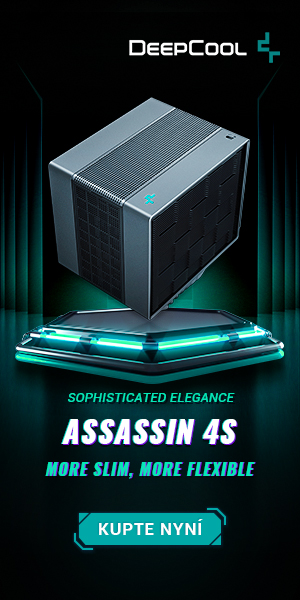

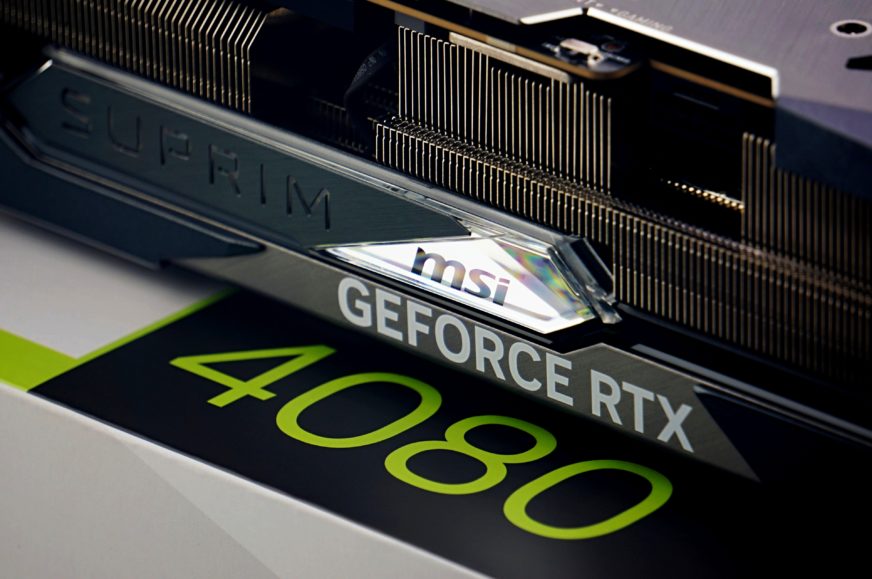
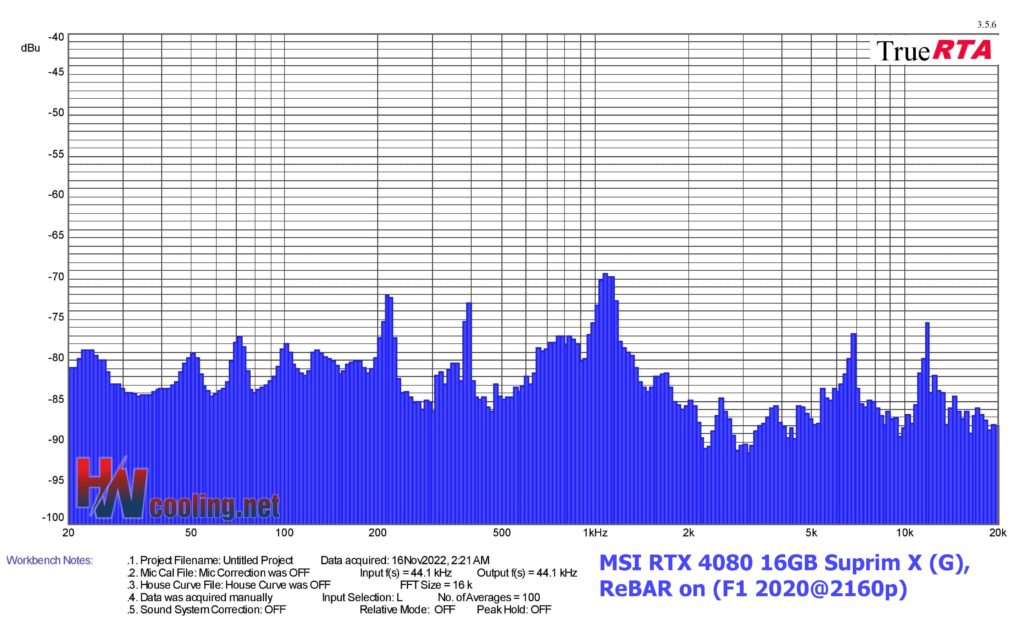
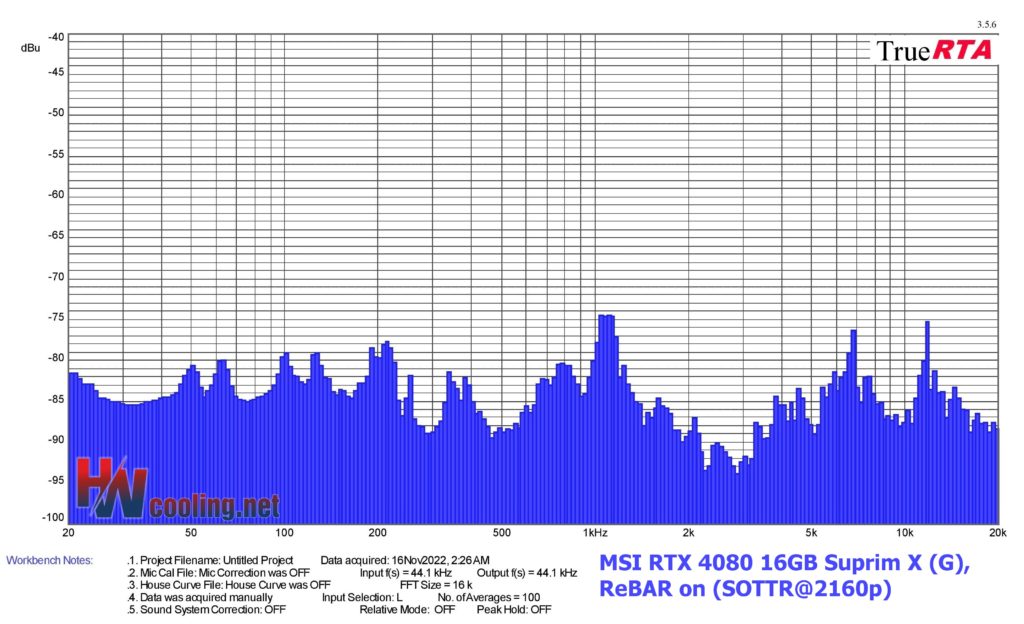
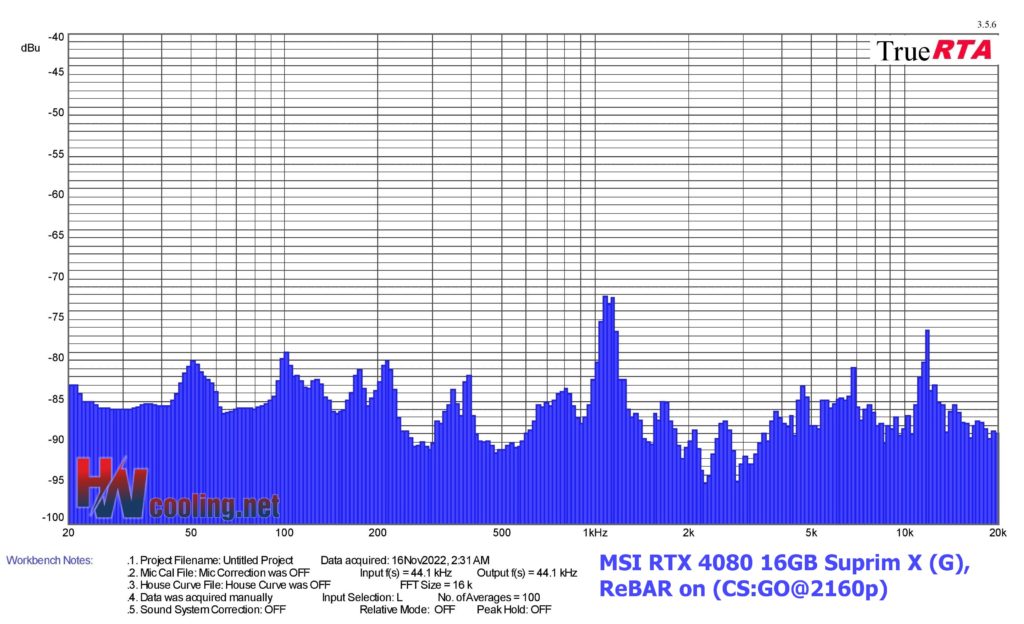
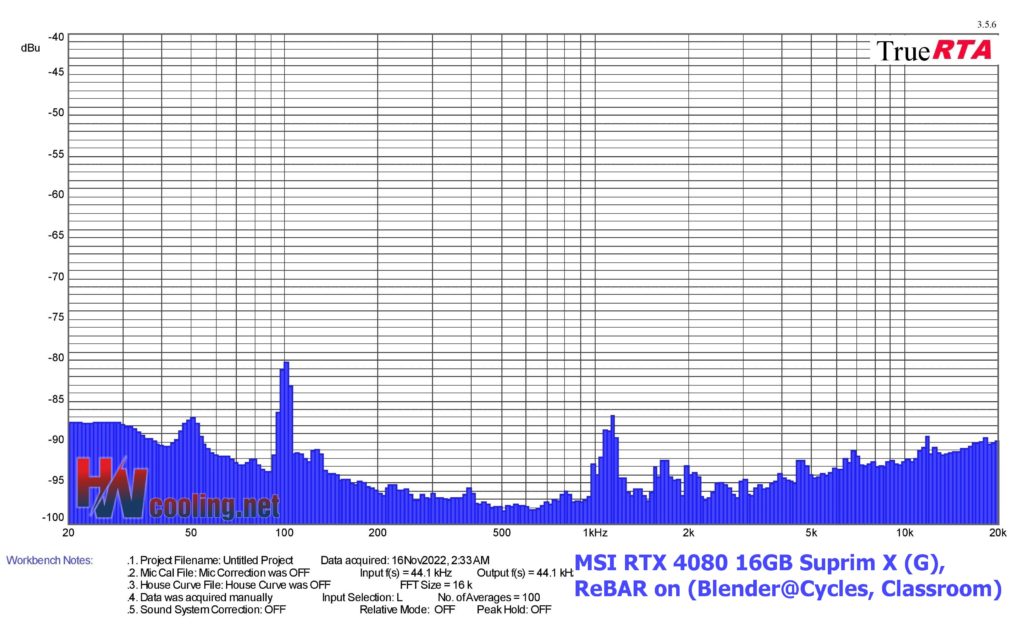



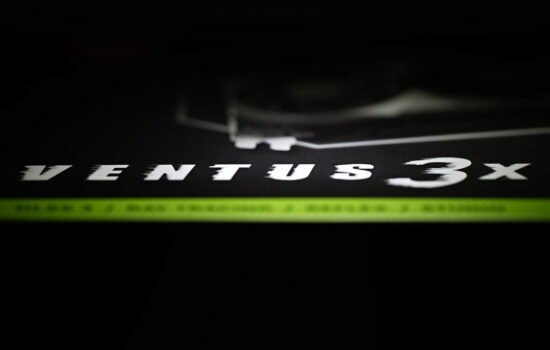
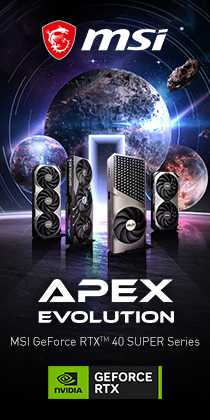

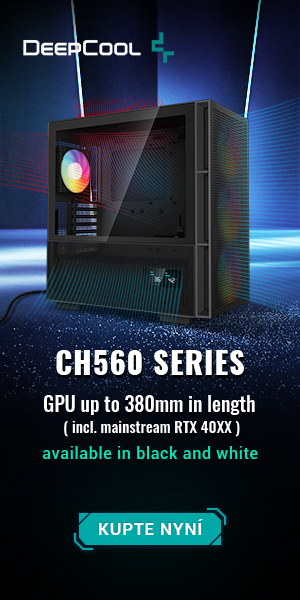
The cooling is not too great. Lower models like 3070 Gaming Trio do operate silently in comparison. Maybe some blame can be attributed to high TDP. Still disappointing to see. Coil whine with 2 high peaks in the traditional frequency area is even more disappointing. MSI seemed to be the way to go for folks who want to avoid bad coil whine. Not anymore.